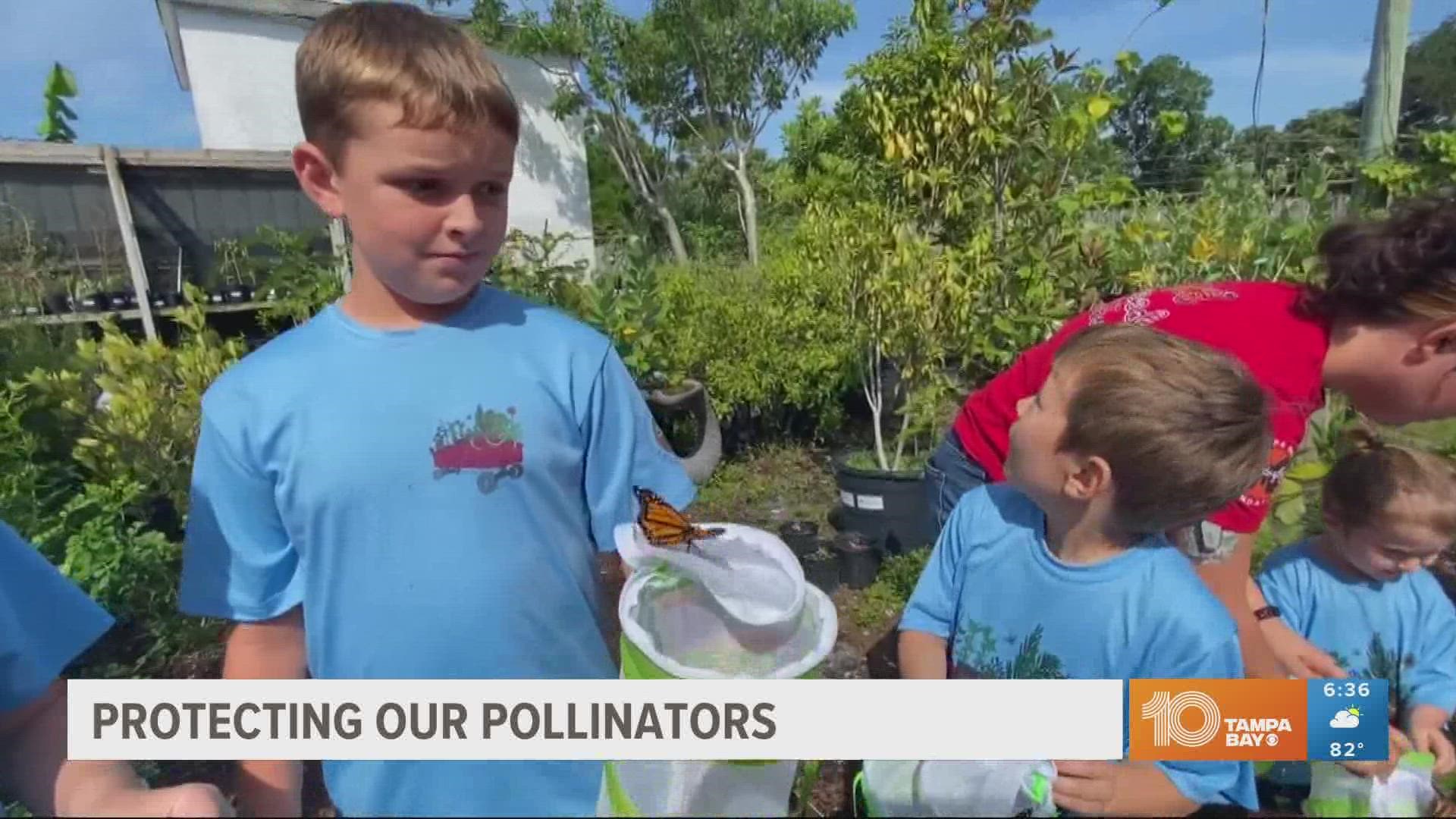TAMPA, Fla. — Protecting our pollinators. Birds, bats, bees and of course butterflies are all essential to our ecosystem, by pollinating plants that are responsible for bringing us 1 out of every 3 bites of food.
A Tampa woman is passionate about providing pollinators what they need no matter where they live. As a matter of fact, you'd never know there's a beautiful butterfly garden right off a busy road in South Tampa.
With so much growth in the Tampa Bay area and consistent pesticide use, our pollinators need a little help. The owner of The Little Red Wagon Nursery, Anita Camacho, has some suggestions on what we can all do.
It's butterfly release day for these kids who have spent the week at camp learning about these beautiful pollinators. Camacho loves this.
"It's like Christmas. It's like watching them, their faces light up, the butterflies fly away and then they're watching all the butterflies all around the whole yard and property. I don't think it ever gets old, no matter how old you get."
She loves teaching kids about the importance of pollinators at her nursery in South Tampa.
"They absolutely absorb it like sponges and they love it. They love getting dirty, they love learning about the bugs. They're not afraid."
As an avid gardener most of her life, Anita has a very personal reason for teaching people the importance of native plants and protecting our pollinators.
"About 25 or so years ago, my mother was diagnosed with Parkinson's and she's an avid gardener. When she was diagnosed with that disease, I didn't really understand it. I did some research and found that it was linked to toxic pesticide exposure."
So she would love to see everyone, no matter where they live create their own healthy oasis. "And it's just little, small areas. We're a small nursery in South Tampa in a very urban area and we have a ton of pollinators here."
Just this week, the monarch butterfly was placed in the endangered category by the International Union for the Conservation of Nature. Scientists say the population has shrunk 85% since the early 1990s. That's just another reason why it's important to preserve and protect these natural habitats.

